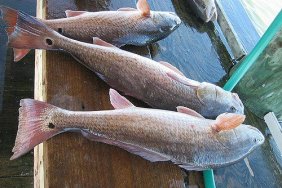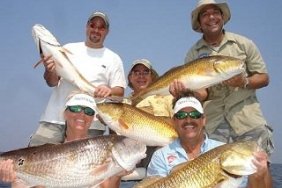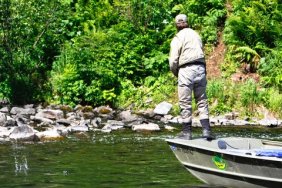 The rivers may still be cold, or even frozen, in your neck of the woods, but if you can find your way to one of the warmer coastal areas down South right now, you can capitalize on the late winter redfish bite that picks up this time of year.
The rivers may still be cold, or even frozen, in your neck of the woods, but if you can find your way to one of the warmer coastal areas down South right now, you can capitalize on the late winter redfish bite that picks up this time of year.
When the temperatures are low, crabs can be more abundant than shrimp, and fly anglers seeking redfish would do well to learn one of the favorite crab fly patterns for attracting tailspot strikes: Simon’s HoverCrab.
When redfish are rooting in weeds and submerged grass, where it’s too thick to cast weighted flies, Simon’s HoverCrab is a great pattern to tie on. Lightly belly weighted and made from foam, the HoverCrab is designed to suspend in the strike zone. The trick is to get it hovering just above the grass tops, with just enough sink from a fluorocarbon leader, and wait for the slurp.
You can also mow through the grass with this fly. To do this, figure out which way the fish is moving and aim a few feet ahead of its course. Your line will likely land across the top of the grass, and your fly will get stuck on the grass above the surface. Next, instead of trying to strip the fly, wiggle the line with your wrist when the fish nears. Your fly may drop into the water and get a hit, and even if not, the wiggling grass will draw the red’s attention and it’ll strike the dangling crab.
Finally, you can fish the HoverCrab on a monofilament leader dressed with a smear of floatant, and swim it right across the surface. The key here is to make the crab cause ripples and create a small wake. Do that, and any redfish looking upward to feed will crush it.
If you’re heading to inshore saltwater, you can capitalize on late winter redfish action with a few crab flies on hand. Simon’s HoverCrab is a fan favorite and will go a long way towards enabling you to pull more than a few tailspots to the boat before the warm weather sets in for good.








